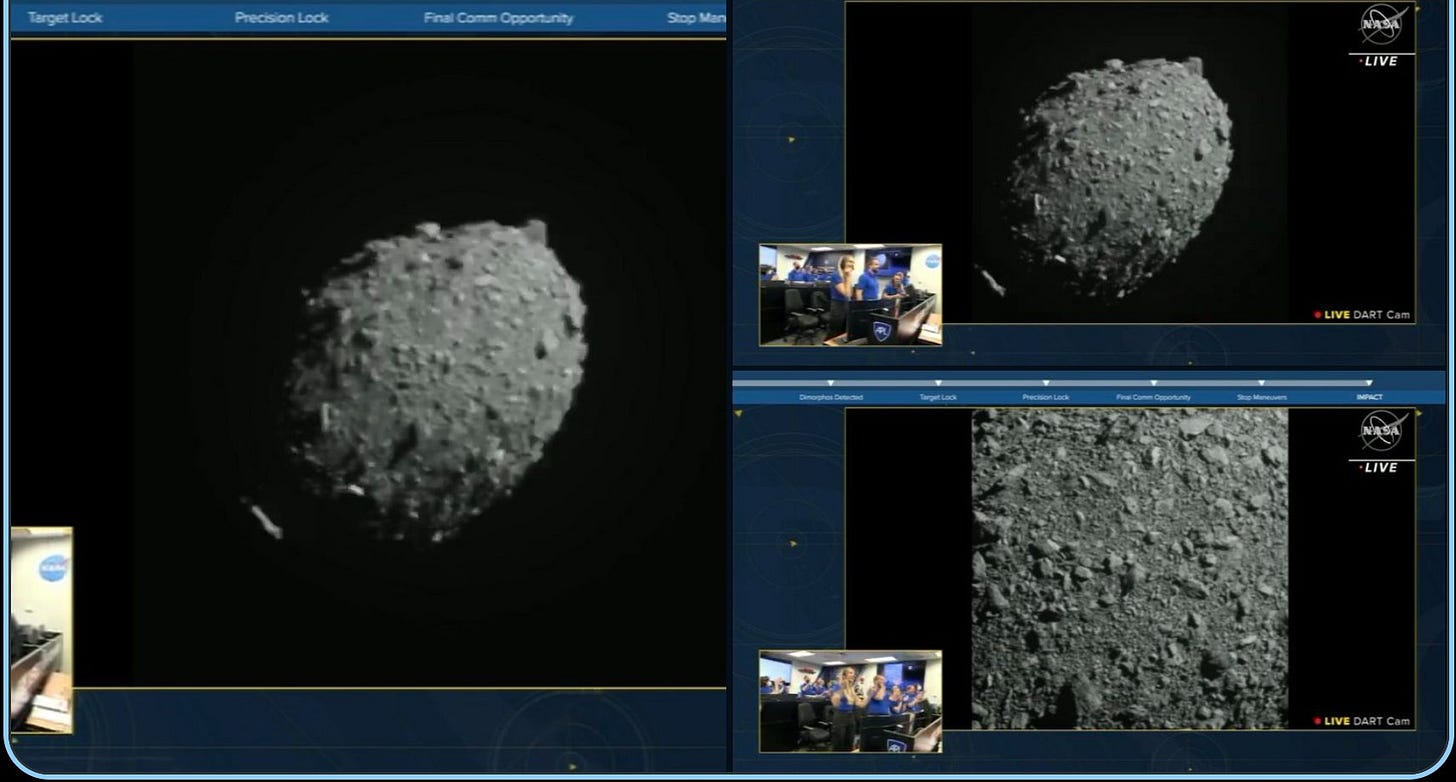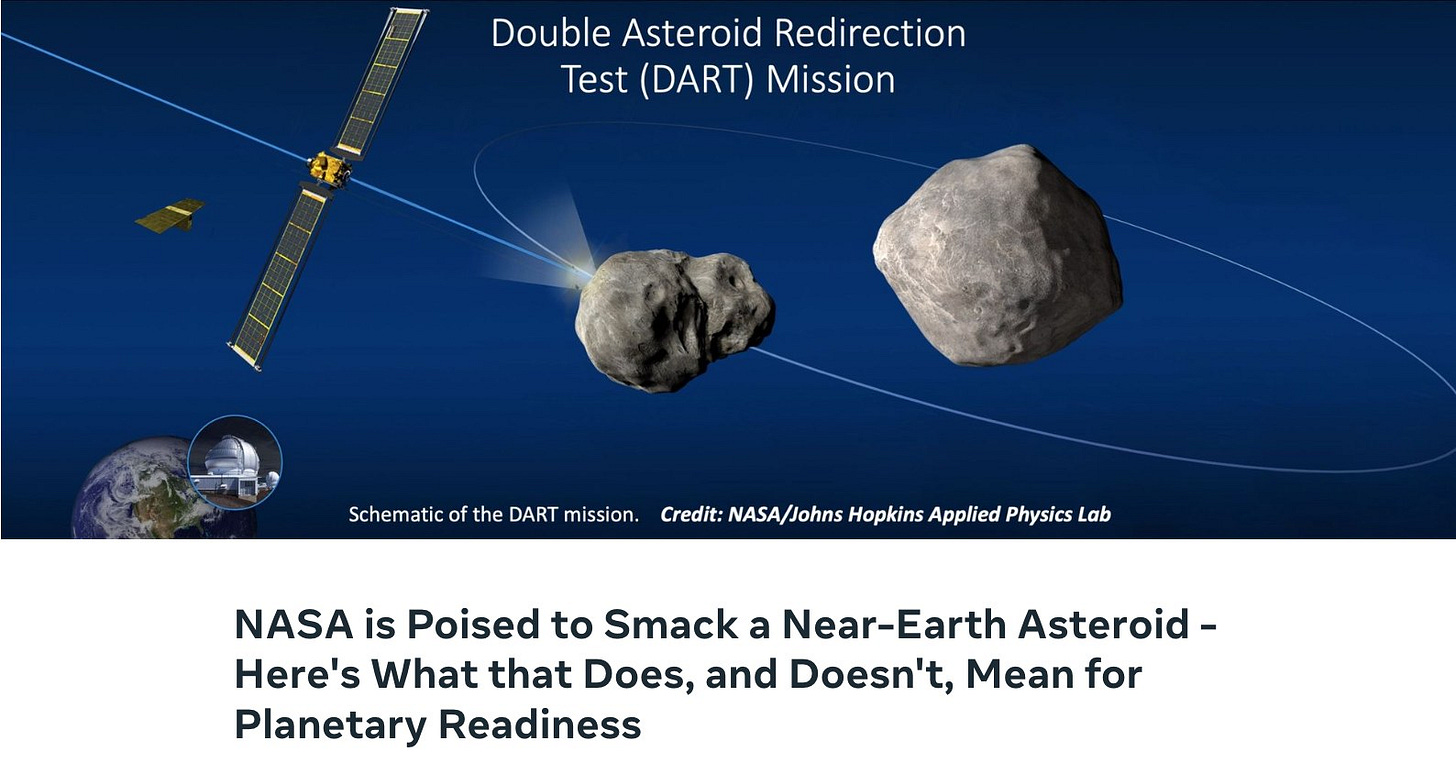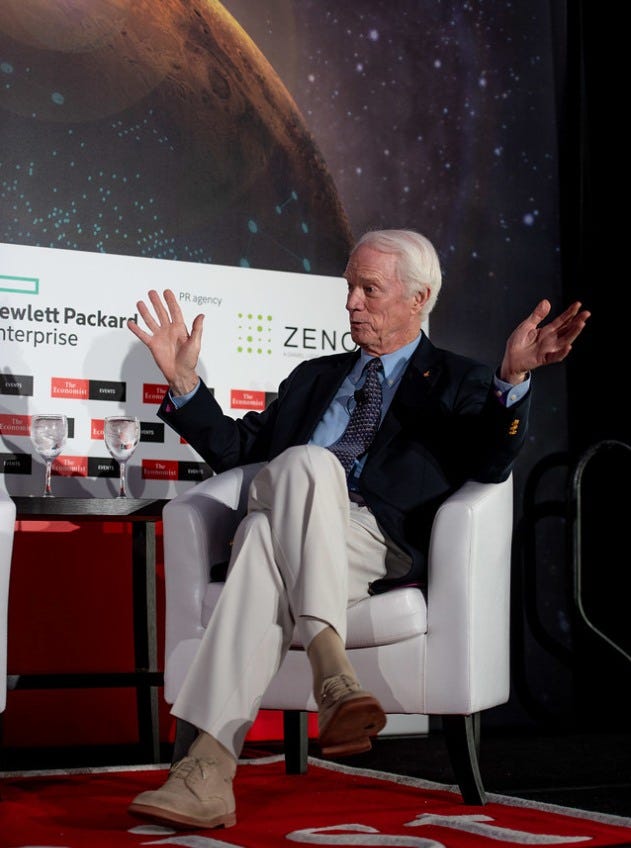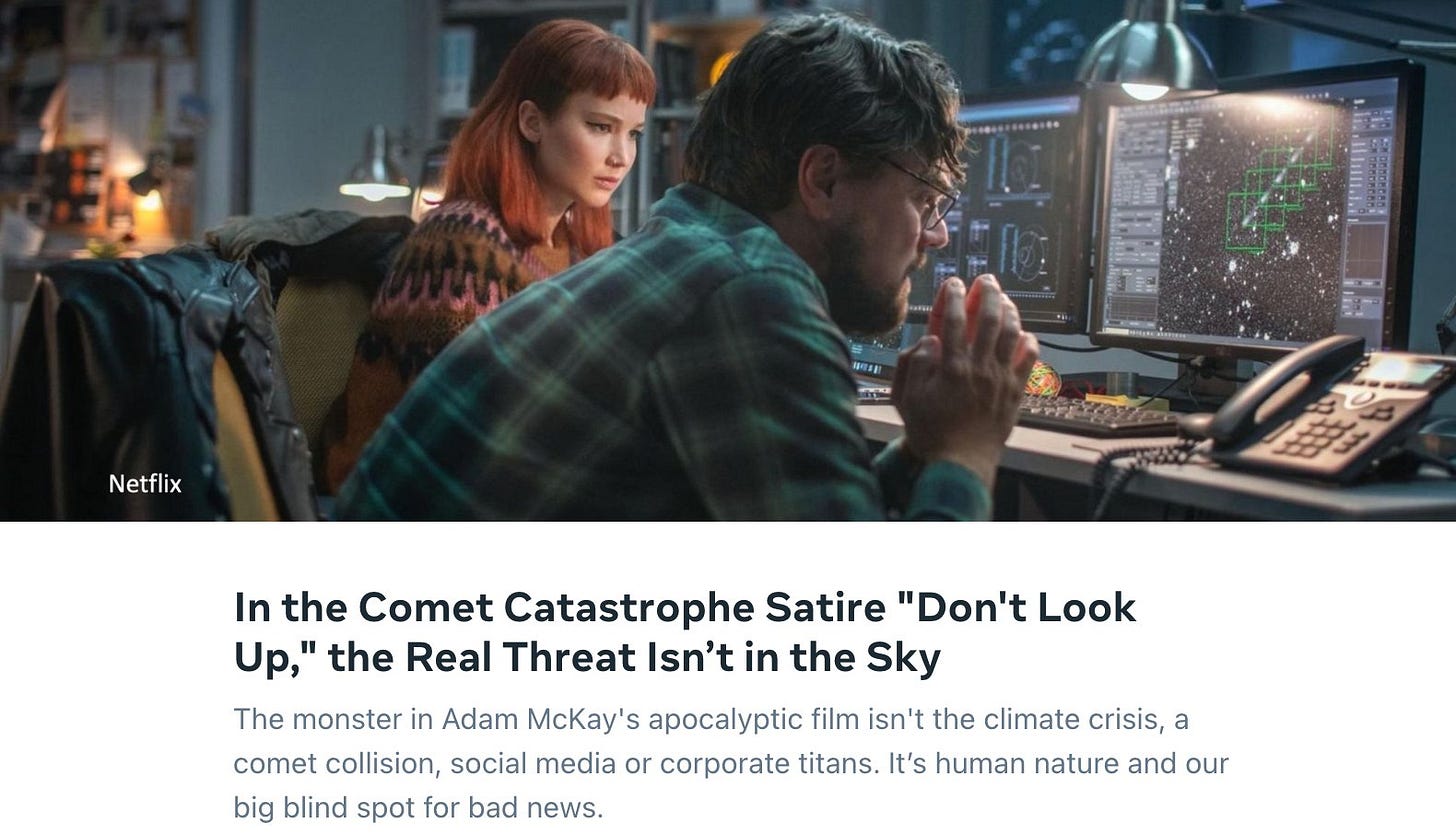Celebrate One Small Step for Planetary Sustainability in NASA's First Physical Test of an Asteroid Deflection Method
With the DART Mission, it's clear humanity is developing the capacity for planetary stewardship and defense. We just need to juice it all up a bit.
Updated 9:45 pm, 9/26/22 - If you've been following my work for awhile, you know I'm passionate about planetary sustainability well beyond stemming global warming and conserving Earth's biological bounty.
I'm a longtime fan of programs around the world giving serious attention to low-odds, high-cost calamities, from NASA's Planetary Defense initiative to Cambridge University's Center for the Study of Existential Risk.
It's always a balancing act, and political and behavioral realities guarantee that here-and-now issues alway dominate, which makes sense - until the worst ends up actually happening.
So I hope you tuned in even briefly on NASA's live site or YouTube channel (or you catch when the results are calculated) just to celebrate a tiny step on the path to cutting risks that an incoming asteroid sets back civilization a century or two.
It's a testament to the power of science and engineering that we all knew the DART mission (NASA’s Double Asteroid Redirection Test) would intentionally crash into a harmless asteroid, Dimorphos, precisely at 7:14 p.m. ET to see if that nudge can fractionally change its orbit.
This really is the first physical test of one of a variety of asteroid deflection methods (not including fictional ones). Here's a neat 2013 presentation showing the options (by Massimiliano Vasile, an aerospace engineer at the University of Strathclude).
This is the live feed from the spacecraft instruments.
You can watch NASA's commentary here:
We've come a long way since 2006, when agency appointees in the George W. Bush administration tried to expunge the phrase “To understand and protect our home planet" from the NASA mission statement as it appeared in budgets and other documents.
Wether or not the DART Mission successfully nudges its asteroid target, it's clear that humanity is slowly developing the capacity for planetary stewardship and defense. We just need to juice it all up a bit, particularly the "mission to Earth" part.
When you want to dig deeper, please click back to the story I posted when the spacecraft was launched, long before most of you were subscribers.
And I have to use this moment to offer my personal gratitude to Rusty Schweickart, the Apollo 9 astronaut who made planetary defense a personal mission over the last 20 years, including his work, with many others, building the B612 Foundation, which has helped drive policy from theory to action on identifying potential asteroid threats and pursuing defense strategies and protocols.
Rusty's been my trusted guide on planetary defense issues and options since 2008. Explore my many Times stories citing him here. Listen to our Skype chat in 2013 after the Chelyabinsk meteor explosion.
A big next step is B612's Asteroid Institute and ADAM project, described as "a comprehensive map of the solar system enables scientific exploration, economic development, and the protection of the Earth from asteroid impacts."
And, yes, there was that comet catastrophe movie, which everyone swears is about climate change - although I (and quite a few others) do still see huge differences between these two risks humanity is facing.
Read my take on "Don't Look Up"
Updates
Two of my Bulletin colleagues have written illuminating posts with fascinating additional details on this mission.
Here's the post by scientist and educator Dr. Yajaira Sierra-Sastre:
The DART Mission is Humanity's First Attempt to Learn How to Redirect an Asteroid
And here's David Kerley, former ABC News correspondent and transportation wizard:
They hit the asteroid- Did it work?
Support Sustain What
Send me feedback (including corrections!), tips, ideas here.
Find my social media accounts, books and music in a click here. And please share Sustain What with solution-focused friends and colleagues!









